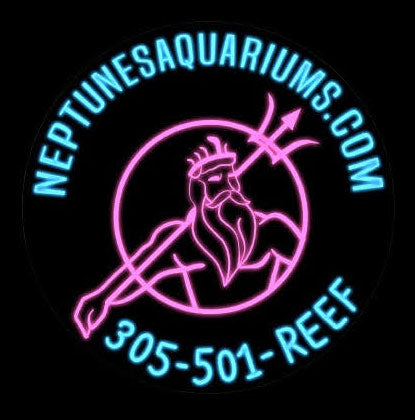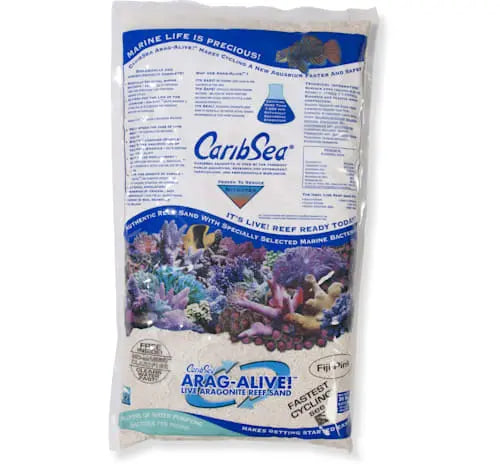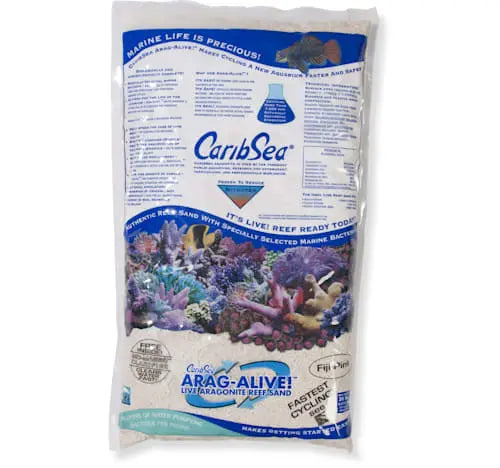Introduction to Live Sand and Its Role in Aquatic Environments
Live sand isn’t just any sand. It’s a vital player in setting up a natural aquatic environment. This sand isn’t dead; it’s teeming with life. Microscopic bacteria and organisms call it home, each playing their part in keeping the habitat healthy. Think of live sand as the ocean’s floor in a tank. It does more than sit pretty. It filters the water, breaking down waste like a tiny, natural cleanup crew. Plus, it provides a comfy habitat for critters that dig and burrow, maintaining the balance of your underwater world. In short, live sand kicks off and supports the crucial cycling process, removing harmful toxins and keeping your tank residents happy and healthy. Without it, you’re missing a core piece of the natural puzzle.
What Exactly is Live Sand?
Live sand isn’t just any sand you scoop up from the beach. It’s a vital player in setting up a natural aquatic environment, especially in saltwater aquariums. This type of sand is alive, teeming with beneficial bacteria and microorganisms. These tiny inhabitants play a crucial role in the nitrogen cycle, breaking down waste products from fish and other marine life into less harmful substances. Live sand also helps maintain the right pH levels in the aquarium and anchors plants and other decorations. In essence, live sand creates a foundation that replicates the ocean floor, making your tank more than just a glass box—it becomes a slice of the ocean itself.
Benefits of Incorporating Live Sand in Your Aquarium
Live sand does more than just make your aquarium look good. It plays a crucial role in creating a natural and healthy environment for your fish and other marine life. First, live sand is teeming with beneficial bacteria. These tiny workers help break down waste, making the tank cleaner and safer for its inhabitants. Second, it aids in the biological filtration process. By trapping detritus and providing a space for beneficial bacteria to thrive, live sand effectively reduces toxins like ammonia and nitrites in the water. Third, it offers a natural habitat. Many marine creatures, including crabs and burrowing fish, rely on the sandy bottom for shelter and foraging. Incorporating live sand into your aquarium isn’t just about aesthetics; it’s about fostering a balanced, thriving ecosystem.
Types of Live Sand and How to Choose the Right One
In the world of aquariums, live sand isn’t just another item to tick off your setup list; it’s a game changer for creating a more natural aquatic environment. Essentially, live sand refers to sand that has beneficial bacteria. This bacteria plays a crucial role in breaking down waste, thus maintaining the cleanliness and balance of your tank. Now, when it comes to types of live sand, you’ve got options, and choosing the right one boils down to understanding what each offers.
First off, we have Aragonite sand. Good choices are Caribsea Fiji Pink Arag-Alive! Live Reef Sand & Caribsea Bahamas Oolite Arag-Alive! Live Reef Sand. It’s a hit among reef tank owners for a good reason. This type of sand helps in maintaining the pH levels of the water, making it an ideal choice for marine aquariums. Plus, its fine grain size makes for a stunning, beach-like appearance.
Next up is Crushed Coral. Unlike Aragonite, crushed coral bits are bigger, but they’re just as effective in buffering pH. If you’re aiming for a tank that mirrors the natural ocean floor, crushed coral might be the way to go.
For those who favor the exotic, Black Sand like Caribsea Hawaiian Black Arag-Alive. Live Reef Sand makes a statement. It’s not just about aesthetics; black sand can make the colors of your fish and corals pop. Yet, it’s not just about looks. This sand type can also host beneficial bacteria, though it doesn’t have the same pH buffering capabilities as Aragonite or crushed coral.
Choosing the right live sand often comes down to your aquarium’s inhabitants and aesthetic preferences. Consider the type of environment you want to create, the pH level your aquatic pets thrive in, and, of course, the look you’re aiming for. Remember, the right sand can do wonders for your tank’s ecosystem, making it a critical decision in your aquarium setup.
How Live Sand Helps in Biological Filtration
Live sand does wonders in your aquarium, acting much like a pro cleaner. Imagine it as a tiny, unseen workforce. It’s not just regular sand. This type is alive, buzzing with beneficial bacteria. These bacteria are ninjas against ammonia and nitrite, two big baddies that can harm your fish. When fish do their business or when bits of uneaten food decay, ammonia levels spike. Here’s where live sand steps in. The bacteria in the sand convert these harmful substances into nitrate, which is far less dangerous, and plants can even use it as food. This process is called biological filtration, and it’s a big deal because it keeps the water safe and clean for your aquatic buddies without needing constant human intervention. Yep, live sand basically helps your tank clean itself. How cool is that?
Creating a Natural Habitat: The Aesthetic Value of Live Sand
Live sand isn’t just for looks. It plays a crucial role in your aquarium, mimicking the natural habitats of the fish and other marine life. Think of it as bringing a piece of the ocean floor into your home aquarium. This isn’t just about making things look pretty. Live sand harbors beneficial bacteria that break down fish waste and other organic matter, keeping your tank clean and your water quality high. Plus, it helps in stabilizing the tank’s ecosystem by providing essential minerals and maintaining pH levels. The aesthetic value, while important, is just the cherry on top. When you lay down a bed of live sand, you’re not just decorating; you’re enhancing the life-support system of your aquarium. It’s about creating a space that feels like home—for every creature in your tank.
Maintenance and Care for Live Sand
Taking care of live sand is simpler than you might think, but it’s crucial for keeping a healthy aquatic environment. First, avoid stirring the sand too much. This can upset the delicate balance and harm the beneficial bacteria living in it. Periodically, you’ll want to lightly rake the sand to prevent the formation of dead spots where waste accumulates. Also, siphoning the top layer of the sand during water changes helps remove any built-up detritus without disturbing the deeper layers where most of the beneficial bacteria reside.
Remember, the amount of care your live sand needs depends on the size of your tank and the number of inhabitants. More fish means more waste, which could require more frequent cleaning. However, striking the right balance is key—you want to clean enough to maintain a healthy environment without overdoing it and disrupting the ecosystem you’ve worked hard to establish.
Common Mistakes to Avoid with Live Sand
When setting up a natural aquatic environment, using live sand seems straightforward, right? Dump it in, and you’re good. Not quite. There are some common mistakes that can mess things up. First off, don’t just pour it in without rinsing. Yes, live sand comes packed with beneficial bacteria, but giving it a gentle rinse can prevent your water from turning into a cloudy mess. However, don’t go overboard with the cleaning; you want to keep those good bacteria. Another big mistake is using too little or too much. You need the right amount to create a stable bed for your aquarium. About 1 to 2 inches of sand depth is usually the sweet spot. Too little and you won’t have enough biological filtration; too much and you risk creating dead spots that harm your tank’s health. Also, don’t ignore the type of live sand you’re using. Different types suit different environments. Matching the sand to your tank’s inhabitants ensures they’ll feel right at home. So, to sum it up, rinse but don’t sterilize, measure for the sweet spot, and match the sand to your tank’s needs. Stick to these, and you’re all set for a healthier aquarium.
Live Sand vs. Regular Aquarium Sand: Understanding the Differences
When setting up an aquarium, choosing the right type of sand can make a big difference. People often wonder why some choose live sand over regular aquarium sand. Here’s the scoop. Live sand is teeming with beneficial bacteria and microorganisms that play a crucial role in maintaining a healthy aquatic ecosystem. It’s not just sand; it’s a living piece of the ocean’s floor, helping with waste breakdown and toxin removal. Regular aquarium sand, while cheaper, doesn’t come with these natural cleaners. So, you’re missing out on the bacteria that keep things balanced. Think of live sand as the busy janitors of your aquarium, working around the clock to clean up. Regular sand, in comparison, is just there, not doing much. This choice affects everything from water quality to how well your plants and animals thrive. Live sand can cost more upfront, but it can save you time and hassle in maintenance down the line. Choose wisely, and consider the long-term benefits of a happier, healthier aquarium.
Conclusion: Enhancing Your Aquatic Environment with Live Sand
Adding live sand to your aquarium is more than just about aesthetics. It’s a key player in maintaining a healthy and balanced aquatic environment. By now, you should understand that live sand acts as a natural filter, breaking down waste and reducing harmful nitrates. It also helps in stabilizing pH levels and provides essential minerals. Live sand isn’t just sand; it’s a living, breathing part of your aquarium that supports the overall ecosystem. Whether you’re a seasoned aquarist or just starting, incorporating live sand can significantly enhance the health and beauty of your tank. Remember, a thriving aquatic environment is not just about the fish and plants; it’s about every grain of sand that contributes to the ecosystem’s balance. So, consider live sand not just as a substrate, but as an investment in your aquatic habitat’s future.
CaribSea Aquarium Substrates Key Benefits:
- 1. They are clean, pest-free and completely reef-safe.
- 2. Their carbonate component helps to maintain proper aquarium water alkalinity.
- 3. Arag-Alive substrates are pre-seeded with nitrifying bacteria, shortening the cycling period in new systems.
- 4. They provides a massive amount of usable surface area for beneficial bacteria growth.
- 5. They provide an excellent habitat for infaunal (burrowing) species to anchor, forage and/or hide.
- 6. They reduce tank maintenance, allowing you to support a larger bioload in your tank.



